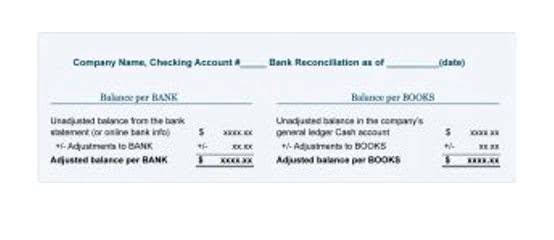
The absolute value of the debt interest tax shield is the present value of these tax savings, and this is separately added to the present value of enterprise cash flows. APV can provide a more nuanced approach to valuation than methods like discounted cash flow (DCF) analysis. Its main advantage is separating out the value created by decisions for funding, primarily through tax shields resulting from interest payments on debt.
Calculation Example
We present an interactive DCF model that illustrates discounted equity cash flow and discounted enterprise cash flow using both the WACC and APV methods. Understanding each approach helps in ensuring consistent valuations, whichever method you choose to adopt. A tax shield in capital budgeting is a way for corporations to strategically plan their optimal capital structure and decide which investments to follow. This, in turn, makes debt funding much cheaper since interest expenses on debt are tax-deductible. There are many examples of a tax shield, and it often depends on the tax rate of the corporation or individual as well as their tax-deductible expenses. It can also depend on the type of taxable expenses being used as a tax shield.

2. Tax shield valuation theories if debt is constant
Another option is to acquire the asset on a lease rental of $ 25,000 per annum payable at the end of each year for 10 years. When it comes to understanding the tax shield definition, understanding how to calculate it under different scenarios is important. Julia Kagan is a financial/consumer journalist and former senior editor, personal finance, of Investopedia. Another possible scenario occurs if the sum of EBIT and OI is negative.
- The chapter deals with the analysis and classification of selected approaches to the quantification of tax shields.
- Tax shields are essentially tools used to protect income from being taxable.
- Only the APV approach to an enterprise free cash flow DCF has a discount rate that is unaffected by leverage changes.
- In a business with consistent growth, it makes sense to defer taxes because, when they come due, revenue has grown, and the tax payment will make a lower impact, relatively speaking.
- You may have heard of tax shield depreciation in connection with your residence.
Financial leverage in DCF valuation
- This can incentivize companies to take on more debt, as the tax benefit from this shield can make borrowing cheaper and more attractive.
- If you invest in a new project with business cash or a capital contribution, the full amount of return on that investment is taxed.
- If she buys the new equipment, Kelsey can make an extra $5,000 per month (that’s a lot of pies).
- An interest tax shield is a tool companies use to decrease income taxes made available due to the tax-deductible nature of interest payments.
- Arzac and Glosten [23], based on the approach of Miles and Ezzell, developed a unique method which eliminates the discount rate.
- Tax shields are any tax deductions that allow a business to avoid taxes.
If you don’t report every element of your income—including bonuses paid by your employer and tips—then you are guilty of tax evasion. If you deliberately claim specific tax credits that you’re not eligible for, then you are committing tax fraud. Interest expenses on certain debts can be tax-deductible, which can make the entire process of debt funding much easier and cheaper for a business. This works in the opposite way to dividend payments, which are not tax-deductible. For example, if you have a tax rate of 24 percent and you have $2,000 in mortgage interest, you can determine that your tax shield would be $480.

While the three approaches all deal with the tax shield differently, ultimately each incorporates this contribution to value into the final result, as illustrated by identical valuations in the model. We have often come across analyst models that appear to incorrectly mix elements of both an enterprise and equity approach, or which fail to consistently deal with financial leverage. For example, when using an equity free cash flow model, it is important to include the forecast debt cash flow, including changes in debt itself, in the cash flow that is discounted.

If you invest in a new project with business cash or a capital contribution, the full amount of return on that investment is taxed. The tax shield is also affected by the tax system and corporate and personal tax rate or loss carried forward, which affects the effective tax rate and tax burden [38, 39, 40]. Jong et al. [36] examined the importance of country and firm-specific factors in the leverage choice of companies from 42 countries.
Corporate tax incentives and capital structure: empirical evidence from UK tax returns
- MM and Myers model are characterized by the discount rate kd,2 the risk of tax savings are the same as the riskiness of debt.
- They compared the market value of MBOs (management buyouts) and leveraged recapitalization to the discounted value of their corresponding cash flow forecasts.
- These intangible assets can affect your rate of tax and tax expense.
- This is to highlight how the resulting change in leverage affects the three valuation approaches differently, albeit with the same ultimate equity value.
The 2% difference makes income of $80 and another $100 is made by the return on equity capital. Total income becomes $180 which becomes taxable at 20%, leading to the net income of $144. The benefit of using depreciation with a tax shield is that you tax shield can subtract any depreciation expenses from taxable income. These intangible assets can affect your rate of tax and tax expense. The interest tax shield has to do with the tax savings you can receive from deducting various interest expenses on debt.
When to Use NPV vs. APV
Large companies are more diversified and default risk is reduced as a result of higher leverage. Also, large and traded companies can easily get access to finance that depends more on the economic conditions of the country. Luehrman [14] focused his work on analyzing the use of APV method for business valuation. Another critical point is leverage, the change of which necessitates a periodic revaluation of WACC. In corporate finance, Hamada’s equation is an equation used as a way to separate the financial risk of a levered firm from its business risk.
Then, it adds or subtracts value based on how the company is financed. There are all sorts of opportunities to help reduce the total tax amount you owe when submitting tax filings. A company is reviewing an investment proposal in a project involving a capital outlay of $90,00,000 in a plant and machinery. The project would have a life of 5 years at the end of which the plant and machinery could fetch a value of $30,00,000. Based on the information, do the calculation of the tax shield enjoyed by the company. Let us consider an example of a company XYZ Ltd, which is in the business of manufacturing synthetic rubber.
- Each approach must give the same result if based on consistent underlying value drivers and assumptions.
- C corporations are taxed at the business level, and distributions, or dividends, to owners are taxed at the personal level.
- We’re firm believers in the Golden Rule, which is why editorial opinions are ours alone and have not been previously reviewed, approved, or endorsed by included advertisers.
- You shell out the full amount of the donation in cash and shield 21% (the current business tax rate) of that amount from tax.
- For donations to qualify, they must be given to an approved organization.
- Others propose to discount the tax savings at the risk-free rate.
- For example, if you had medical expenses of $15,000 and your income was $50,000, you could deduct the expense, and you would be taxed on only $35,000 of your income.
